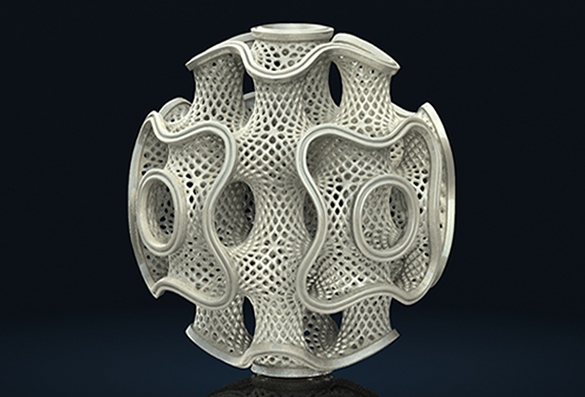Originally written by Cathrine Versfeld | Revised & Updated by Carina Claassens
We’ve all heard about 3D printing and how amazing it is, but what exactly does it entail and how does it work. If you take a minute to think about it, it’s stupefying to imagine the possibilities if 3D printing evolves as planned.  Credit: Jeremy Mallin
Credit: Jeremy Mallin
What Exactly Does it Do?
With 3D Printing objects are built from the ground up in many thin layers.
This might seem like new technology but the first marketable 3D printer was based on a technique known as stereolithography. The concept was created by Charles Hull in 1984 and it works like this:
- A perforated platform is positioned just below the surface of a container of liquid photopolymer (i.e. a polymer or plastic that undergoes a change in physical or chemical properties when exposed to light);
- A UV laser traces an object on the surface of the liquid which causes the photopolymer to harden;
- The platform is lowered slightly and the process is repeated until the complete object has been built up;
- The object is removed from the container, drained of excess liquid, and dried.
There are other techniques to apply when it comes to 3D printing but stereolithography is one of the most precise for producing 3D output. This is no surprise as it has a minimum build layer thickness of 0.06mm.
So in plainer words, objects are designed in a programme and then sent to the 3D printer where it is built up, seamlessly, layer after thin layer.
What Next?
Most 3D printers are not used to create final consumer products; instead, they are employed for swift product prototyping or to simply assist in the production of final products. The range of products that have made use of this technology on a manufacturing or design level is vast. The range includes cars, a house, shoes, jewellery, toys and household appliances.
3D Printers have become capable of working with a wider range of materials which means that they are increasingly being employed to create final products. Almost everything you can imagine can be produced by 3D printers, from guns to meat and food, to clothing and prosthetics.
The whole concept of products will change if we are able to manufacture at the press of a button. 3D Printers can be used to produce product parts that cannot be stocked in factories or shops. Imagine if you are able to order car parts and have them printed on request.
The US Army has experimented with a 3D printer capable of producing spare tank components and NASA engineers are testing functional 3D printed parts for a rocket engine. Artificial limbs have been 3D printed and so has replacement craniums. Dental technicians make use of 3D printing to create crowns and dentures. This link between open source design and 3D printing means that useful products can be created easily and to suit individual needs.
Disruption
Whether or not 3D printers become so commonly available that every household owns one, the fact is that they have many uses for future application. 3D Printing will not just result in a replacement of methods, but will also result in a whole new way of thinking. It will take a long time for humanity to realise the impact of this technology and what exactly it means when it comes to the manufacturing and invention of products.
One could argue that the advent of the Internet is similar to the idea of 3D printers and the manufacturing implications that go with it. Some of us were young enough to adapt easily to the idea of information being readily available, worldwide. Others took time to adjust and get comfortable with the technology, but they got there and now they can’t imagine living without it.
With an increase in the global population comes an increase of demands, but how do we feed the demand and supply that is necessary? 3D printing might be the answer, remember; “Technology makes that which is scarce abundant”.
With major technological advances comes disruption. Obviously not all businesses will be impacted in a negative way. Retailers won’t necessarily be destroyed but most will have to acclimatise. Consider technological advances through the years. The fax machine completely discarded the telegram service. Video and DVD rental stores are on their way out and so are music stores – all because of the Internet and the influx of available information.
3D Printing lowers manufacturing costs and risks and it allows for a wider area of customisation. Fewer raw materials are required and the assembly process is not as timeous. Some even see consumers downloading products and printing them at home. That might be a faraway vision, but the possibility is there.
3D printing is likely to influence all of our lives and purchasing habits. They can already be purchased online; the MakerBot Replicator 2 Desktop 3D Printer is selling for R21, 834 (that's $2,199.00) on Amazon, and prices keep dropping. The impact that 3D printing has on prototyping is significant and the impact on medicine, the arts and even space travel is increasing.
Sound Idea Digital is a complete digital marketing agency. For more information, contact 012 66 44 227 or email to info@soundidea.co.za
Carina Claassens is a Writer for Sound Idea Digital l carina@soundidea.co.za l @SoundIdea | Sound Idea Digital l www.soundidea.co.za
[Back]
blog comments powered by Disqus
